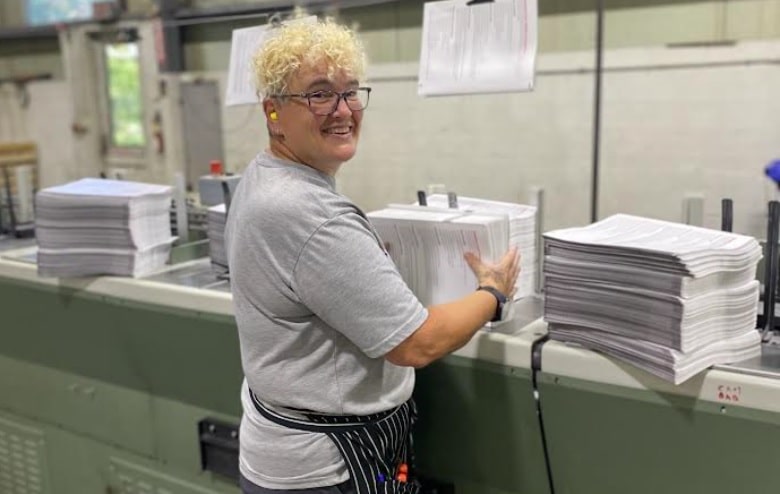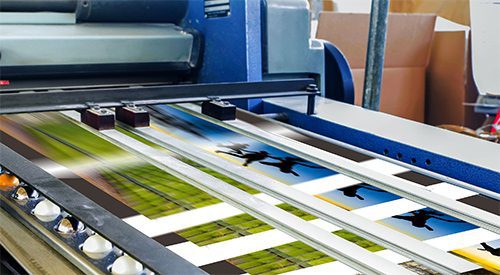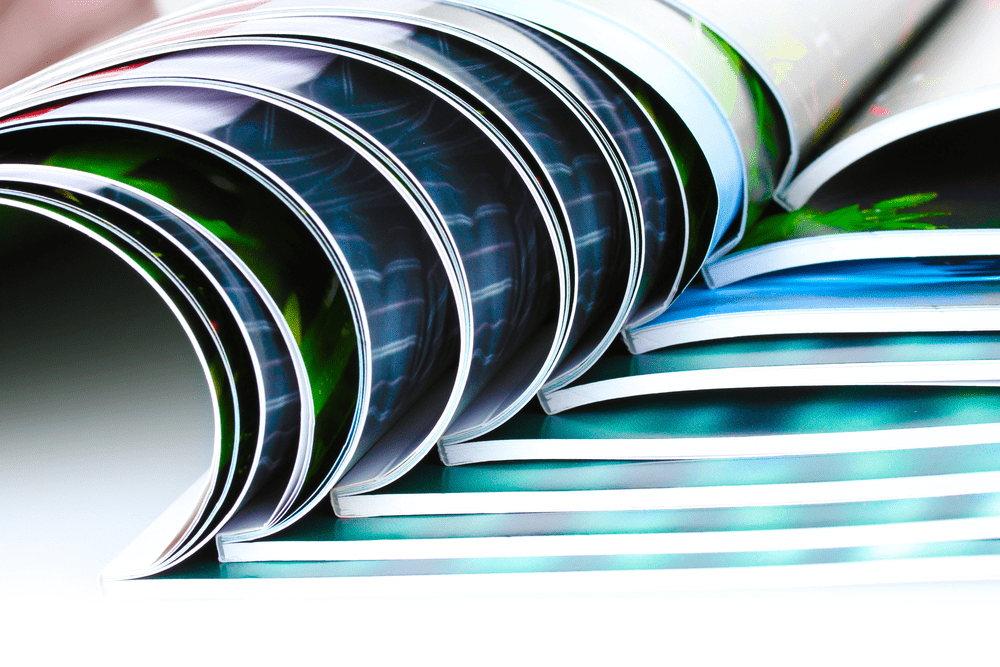Conceptualizing, designing and printing a magazine is an incredible undertaking which can be time-consuming and stressful. As with any complex process, the best strategy for magazine printing is to break your tasks into manageable parts. Although your business will have complete control over the look and feel of the final process, you shouldn’t hesitate to consider your printing company as your partner, rather than simply a print service provider. As you finish your designs and agonize over your creative choices, your printing company can provide helpful feedback and critical suggestions to improve the quality, readability and cost of your final product.
Dollco can help streamline your magazine printing process by providing a handy checklist which ensures you’ll address all of your primary concerns and which prevents you from overlooking critical components that might otherwise lead to unfortunate mistakes. Choosing a print company that offers superior customer service and good communication lowers stress and increases creativity.
When Designing A Print Magazine
Any piece of printed material which carries your logo is of course a reflection of your brand. It’s important all of your printed material has an overall high quality look and feel, as print is also a tactile experience. When designing a magazine, there are many choices and decisions to make. Cost is always an important consideration, but equally important are the materials, sizes, and quantities required to best accomplish your purpose. Your printing company can help guide you by sharing their experience and industry best practices. Your mission is to do the best job creatively and impact the most people for the lowest price.
Magazine printing is a challenging task that provides lots of opportunities for creativity and fun amid high stress and anxiety. It is always healthier and more efficient to make time at the beginning of the process for brainstorming and scheduling. Outlining a detailed plan from the beginning helps prevent the need to make time-consuming changes as the project develops. Here are some important considerations.
1. Pick Your Printing Company First
Before you begin to think about the look and feel of your magazine, you should begin the process of selecting a printing company. Find out your printer’s run capacity as this will give you an idea of how quickly your magazine will be produced after all the design decisions have been made, and the finalized graphics are provided. Many magazines contain time-sensitive material which means it’s detrimental to their success in the market if there are unnecessary production delays related to capacity.

It’s also imperative to select a printer with superior customer service as evidenced by dedicated staff who do more than simply liaison with technicians. Creating a successful magazine requires significant communication between the editor and printer. Magazine businesses need a printer they can trust and one who is capable of taking the time required to create a personal relationship and one who demonstrates they care about the project by tirelessly helping, consulting and refining layouts. You need to rely on your printer to give good advice about what materials are available and suggestions to help bring your product to life. You need to trust their recommendations. Finally, you’ll need to rely on your printer to be the ultimate overseer ensuring your finished product has realized its full potential and is of exceptional quality.
2. What is a Magazine Template?
Dollco has magazine templates which provide handy frameworks to help creators maintain design guidelines and consistency. They are divided into sections and contain a range of parent pages depending on the structure and format desired, such as the cover, contents, news-style pages, advert page, feature variants, product reviews, directory and any other concerns the magazine may choose to include.

All printers will provide you with guidelines for graphic requirements. Trim lines, margin areas, and fold lines are all important considerations that will influence the quality of your final product. Many printers can adapt your graphics to their requirements after submission, but the process sometimes results in undesirable graphic distortion. The best way to ensure that you will have a good idea of exactly how your final magazine will look is to work from a precise template either provided by the printer, or one that is made based on the printer’s specific instructions.
Most printing companies use similar measurements, but there can be some internal variation from company to company. Some countries also use slightly different standard sizes, so it is best to verify the dimensions at the outset of the project. Working from a template takes out the guesswork and helps avoid the counterintuitive mistakes that can creep in as a project transitions from concept to the final product.
3. Consider Your Magazine Paper, its Weight and Finish
The paper you select for your magazine will depend on the subject matter and contents of the final product. If your magazine is mainly text-based, you can often save printing and distribution costs by using lightweight, uncoated paper.
If you are creating a magazine that has a lot of photos, you should probably choose a glossy or matte finish. Glossy photos have that wet look that is very glamorous. A matte finish does not have the shine of a glossy finish, but it emphasizes the colour and detail of a photo better than uncoated paper. Matte is a good choice if your magazine has a lot of photos, but still has fifty percent or more text content. Remember that you can always use a sheet of glossy paper for a dynamic cover and then use a more cost-effective material for the interior pages.
4. How to Add Graphics to your Magazine?
Once you have established the production elements and the dimensions of your presentation, you can begin to design your magazine. Once you have finished creating your graphics, be sure to discuss with your printing company how these graphics need to be arranged on the sheets.
Page arrangement for a large magazine can become complicated since the pages are stacked together and then stapled or bound in the middle. Some printing companies require magazine editors to send them print layouts, and other printing companies will rearrange your graphics in preproduction.
What is an Electronic Proof?
An electronic proof is done for any file to be printed in volume. In magazine printing, this includes the cover, interior pages, and inserts where applicable. A prepress expert will scrutinize these files, troubleshooting issues related to their compatibility and their printing in accordance with layouts. The printer will typically utilize preflight software which mimics conditions of the main press to create electronic proofs and accomplish other computerized checks.

Most printing magazines will send editors an electronic proof before they begin to print the volume. Even if you feel everything is perfect, it’s still important to spend time triple-checking the final proof. Every step of the printing process represents a new opportunity where errors can happen and be printed into the product. Reviewing the proof is an editor’s last chance to make any significant changes before the magazine is printed and assembled.
5. How to Distribute a Magazine?
Paper is heavy and magazines are one of the most expensive things to ship by mail, and so it’s important to consider the distribution element of your venture. In downtown Toronto, a popular business magazine got its start by hand delivering a glossy and expensive tabloid to all the financial businesses on Bay Street. Far more common are magazines delivered by Canada Post. A key component of any successful magazine distribution strategy is maximizing your existing channels. Many companies centralize their market intelligence using Customer Relationship Management CRM software to ensure their work finds the right consumers.
Are you bagging your magazine, or wrapping it in brown paper? Consider using eco-friendly poly bags which are biodegradable and ideal for keeping print products dry and secure in the mail – once they’ve been used, they can be composted.
Most Canadian printing companies can send your magazines direct to your mailing list as part of a standard service. This saves publishers the cost of transporting the printed magazine products to their offices or place of business unnecessarily. Direct distribution from your printing company also ensures the magazine is mailed the moment it comes off the press. That’s how it works at Dollco; we’ll get your work into the hands of your customers and clients as soon as possible.
Simplify Your Magazine Printing Process
Developing a relationship with the right printing company can be a key component in your success as a magazine owner and publisher. You require a company with a superior commitment to customer service and which can act as a final level of quality control at every step of your process. It’s important to have clear communication to ensure the printing company knows and shares your expectations for your product. Finally, you need a company that can handle high volume print runs with minimal delay.
By following a simple checklist, you can be assured of creating a physical magazine that meets or exceeds your expectations. If you would like assistance with your magazine printing needs, contact Dollco Print Solutions Group today!

